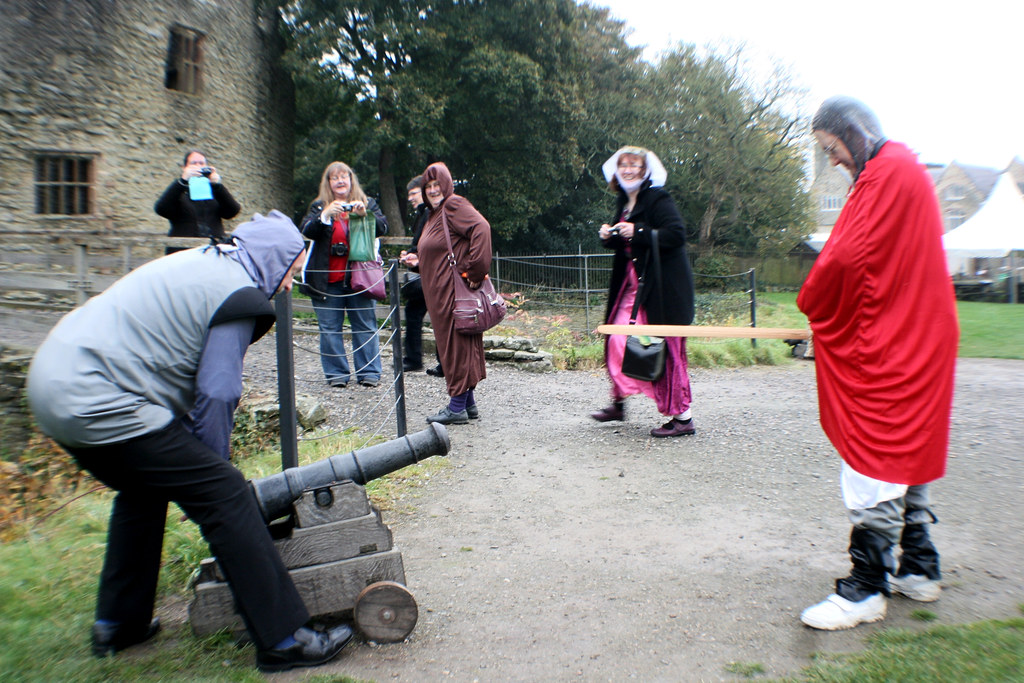Medieval England Tour
Reenactment at Ludlow Castle
This evening I am reprising a medieval England tour.
First, we left our lodgings at Evesham and drove to nearby Worcester. Prime objective here was the Cathedral key aspects of which are:
- Construction commenced by Saint Wulfstan in 1084, replacing earlier cathedrals dating back to AD 680.
- the West End and Nave span work between 11th and 19th centuries. Nave and Cathedral are 180 ft and 400 ft long respectively.The tower is 292 ft high.
- Story of creation can be found in the Victorian West Window.
- The Gerontius window commemorates local born composer Sir Edward Elgar.
- The Jesus Chapel, which is a place of private prayer.
- 12th and 14th century arches in the Nave.
- 14th century tower which houses the clock, 16 cathedral bells and ringing chamber.
- King John's Tomb in the Quire.This king signed the Magna Carta and died in 1216.
- 13th century stone carvings in the Lady Chapel.
- 11th century crypt which is the oldest part of the Cathedral and is now a Chapel of Unity.
- Large alabaster and marble Victorian pulpit.
- Cloisters.
- 12th century Chapter House.
- Garth (or garden)
Worcester Cathedral
Worcester Cathedral-interior
Worcester Cathedral-interior
Worcester Cathedral-interior
Chapter House at Worcester Cathedral
Cloisters at Worcester Cathedral.
Entrance to Garden at Worcester Cathedral
Ancient Sarcophagus
Remnants of medieval; decoration
We departed Worcester about midday and then embarked on a drive to our next destination of Ludlow Castle which we duly reached after about 1 hour. We had a light lunch and the explored the castle with some of the party dressing in medieval costume in order to better connect with the medieval time period.
The key aspects of this massive castle structure are:
- Constructed in 11th century by Roger de Lacy, a Norman and Marcher Lord.
- Enlarged into magnificent palace in the 14th century by Roger Mortimer.
- Was involved in War of the Roses when under ownership of Richard, Duke of York.
- Was home to the 'Princes in the Tower' ( Prince of Wales and his brother) on instructions of Edward IV.
- Was seat of Government for Wales and the Border Counties.
- Catherine of Aragon was widowed here in 1501. She subsequently married Henry VIII.
- Queen Mary Tudor and her court and her court spent the winters of 1525-8 here.
Clearly, Ludlow Castle demonstrates a long history spanning the Norman, Medieval and Tudor periods, a progression which is reflected in the still extant architecture.
Ludlow Castle,
Reenactment fun at Ludlow Castle
Sir George de Scotti, Lord of Ludlow
After departing Ludlow, we called in at nearby Stokesay Castle which, unfortunately, was closed. However, we did manage to gain an appreciation for this magnificent and well preserved, 13th century fortified manor house from the nearby church.
Stokesay Castle, England
Stokesay Castle
Stokesay Church
Finally we arrived at our lodgings at Church Stretton in readiness for the next leg of the tour which takes us to Leicester and site of the Battle of Bosworth, 1485.











Comments
Post a Comment